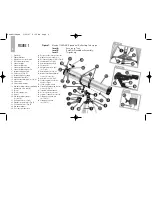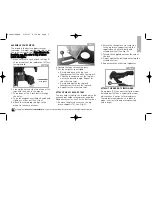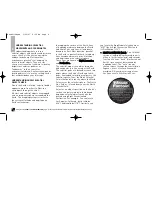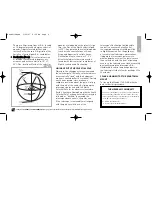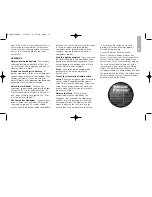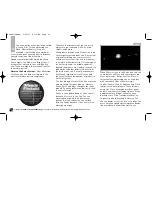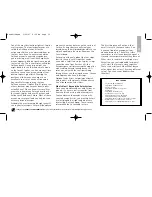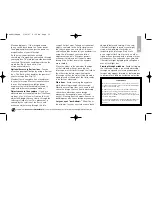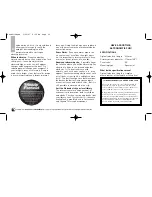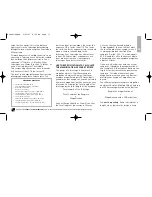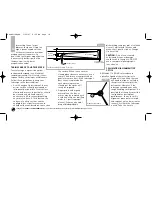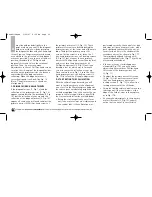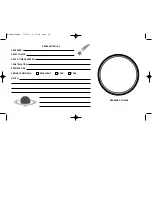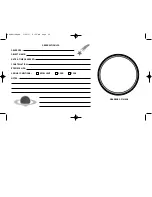
equator are indicated with a plus (+) sign
(e.g., the Dec. of the North celestial pole
is +90
°
). Any point on the celestial equator
(such as thee constellations of Orion,
Virgo, and Aquarius) is said to have a
Declination of zero, shown as 0
°
0' 0".
All celestial objects therefore may be
located with their celestial coordinates of
Right Ascension and Declination.
LINING UP WITH THE CELESTIAL POLE
Objects in the sky appear to revolve around
the celestial pole. (Actually, celestial objects
are essentially "fixed" and their apparent
motion is caused by Earth's rotation). During
any 24 hour period, stars make one
complete revolution about the pole, circling
with the pole at the center. By lining up the
telescope's polar axis with the North
Celestial Pole (or for observers located in
Earth's Southern Hemisphere with the South
Celestial Pole), astronomical objects may be
followed, or "tracked," by moving the
telescope about one axis, the polar axis.
If the telescope is reasonably well aligned
with the pole very little use of the
telescope's Declination flexible cable
control is necessary. Virtually all of
the required telescope tracking will be
in Right Ascension. For the purposes
of casual visual telescopic observations,
lining up the telescope's polar axis to
within a degree or two of the pole is more
than sufficient: with this level of pointing
accuracy, the telescope can track accurately
by slowly turning the telescope's R.A.
flexible cable control and keep objects in
the telescopic field of view for perhaps 20 to
30 minutes.
POLAR ALIGNMENT OF THE EQUATORIAL
MOUNT
To line up the Meade 114 EQ-AR with the
pole, follow this procedure:
THE MEADE 4M COMMUNITY
You haven’t just bought a telescope, you have embarked
on an astronomy adventure that never ends. Share the
journey with others by accepting your free membership
in the 4M community of astronomers.
Go to www.Meade4M.com
to activate your membership today.
There are 24 primary lines of R.A., located
at 15-degree intervals along the celestial
equator. Objects located further and
further East of the zero R.A. grid line (0hr
0min 0sec) carry higher R.A. coordinates.
•
• D
De
ec
clliin
na
attiio
on
n ((D
De
ec
c..)):: This celestial version
of latitude is measured in degrees, arc-
minutes, and arc-seconds (e.g., 15
°
27'
33"). Dec. locations North of the celestial
Fig. 7
14
15
16
17
18
19
20
21
22
23
0
1
12
11
10
9
8
7
5
6
4
3
2
13
Rotation
of the
Earth
0
Dec
.
South
Celestial
Pole
Right
Ascension
Star
Celestial
Equator
-90
Dec
.
+90
Déc.
D
e
c
lin
a
tio
n
North
Celestial
Pole
(Vicinity of
Polaris)
Looking at or near the
Sun
will cause
irreversable
damage to your eye. Do not point this telescope at or near the Sun. Do not look through the telescope as it is moving.
7
Meade114EQAR 3/28/07 9:52 AM Page 9




